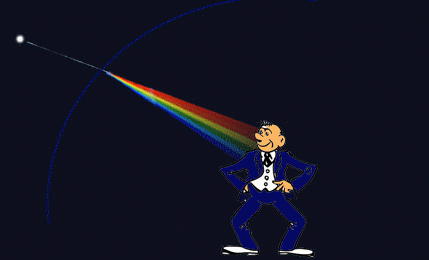December 8, 2011. For the last few years, I've posted this in early December...12/8 marks the earliest sunset of the year! The daylight period is still getting shorter (people who pay attention to these things know that the shortest day is the Winter Solstice around December 21), but not a lot of people can explain tonight's early sunset. It turns out that the rate at which the Sun travels across the sky is not constant - the tilt of Earth's axis and its elliptical orbit conspire to push the Sun ahead of our clocks, and then slow it down again, twice every year. Astronomers call the difference between time told by the Sun (apparent solar time) and clock time (mean solar time) the "equation of time".(If you're interested, you can get the sunrise and sunset times for your location at the US Naval Observatory site.)
The chart on the left above, called the analemma, combines the equation of time with the position of the Sun relative to the equator. Click it for a larger view, and notice that through most of the fall the Sun has been running ahead of the clock, but in December it began to slow dramatically.
It's the Sun slowing down relative to the clock that's moving the daylight period later into the day even as the days get shorter! The worst of winter is still ahead of us, but at least we'll have a little more evening daylight... (the latest sunrise of the year occurs during the first week of January)
This photo composite was made by Tom Matheson over the course of a year, snapping a picture of the Sun at exactly 8 AM (by the clock) each day. Here is a labeled image of Tom's photo.
(This blog is an edited re-post from December 2009 and 2010)






